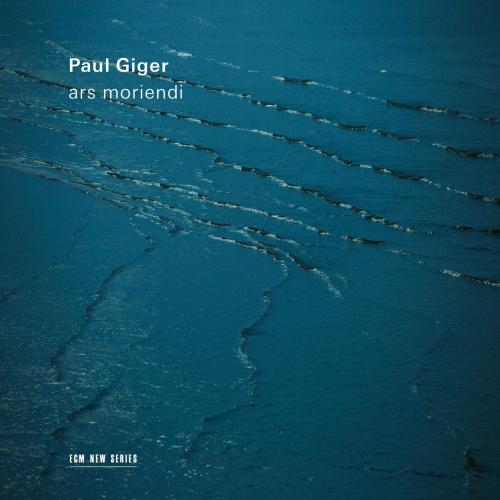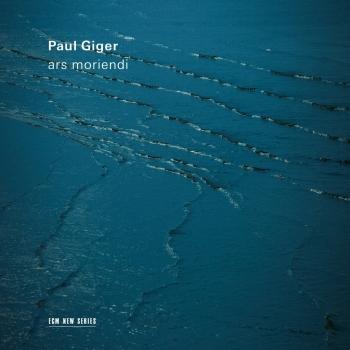
ars moriendi Paul Giger
Album info
Album-Release:
2022
HRA-Release:
26.08.2022
Label: ECM New Series
Genre: Classical
Subgenre: Chamber Music
Artist: Paul Giger
Composer: Paul Giger (1952), Johann Sebastian Bach (1685-1750)
Album including Album cover Booklet (PDF)
I`m sorry!
Dear HIGHRESAUDIO Visitor,
due to territorial constraints and also different releases dates in each country you currently can`t purchase this album. We are updating our release dates twice a week. So, please feel free to check from time-to-time, if the album is available for your country.
We suggest, that you bookmark the album and use our Short List function.
Thank you for your understanding and patience.
Yours sincerely, HIGHRESAUDIO
- Paul Giger (b. 1952):
- 1 Giger: Guggisberglied (LocheZen) 18:54
- 2 Giger: Agony I (Atmosphere) 02:31
- Johann Sebastian Bach (1685 - 1750):
- 3 J.S. Bach: Ich ruf' zu dir, Herr Jesu Christ, BWV 639 (Transcr. Dähler & Giger) 03:12
- Paul Giger:
- 4 Giger: Agony II (Sechzigplus) 06:10
- Johann Sebastian Bach:
- 5 J.S. Bach: Violin Sonata No. 4 in C Minor, BWV 1017: I. Largo 06:11
- Paul Giger:
- 6 Giger: Zäuerli mit Migrationshintergrund 07:01
- Johann Sebastian Bach:
- 7 J.S. Bach: St. Matthew Passion, BWV. 244 / Pt. 2: No. 39, Aria “Erbarme dich” 06:43
- Paul Giger:
- 8 Giger: Agony III (Die bösen Mütter) 06:28
- 9 Giger: Pert Em Hru: IV. Altus solo II 11:52
Info for ars moriendi
On ars moriendi Paul Giger looks at life’s flowing patterns, at death and renewal, as he brings together compositions by Bach and new music drawing inspiration from the work of painter Giovanni Segantini and Swiss folk traditions. The album was recorded in Maloja, where Segantini spent the last years of his life.
„In the late Middle Ages, a literary genre of devotional books illustrated with woodcuts flourished under the name ‘ars moriendi’. They gave instructions on how to 'die well'. The purpose of this tradition was to attune the soul to the 'art of dying' in order to save it for eternity. Music is also an ars moriendi, an exercise in the "becoming" of a note, of "being" in sound and of "passing" into silence – or into an inner reverberation." (Paul Giger)
"Becoming – Being – Passing" – this is the name of the triptych by the Tyrolean painter Giovanni Segantini, which served violinist and composer Paul Giger as an important source of inspiration for the music on ars moriendi. The theme of transience runs through this programme like a thread and combines Bach compositions with original pieces and music influenced by traditional Swiss folk in equal parts. Much of the programme was written in connection with the film about the painter, Giovanni Segantini – Magie des Lichts, and was recorded in the Chiesa Bianca, Maloja, in the Swiss canton of Graubünden. On the album, Giger is joined by Marie-Louise Dähler on harpsichord, Pudi Lehmann on gongs and percussion, and alto Franz Vizthum as well as the Carmina Quartett to form a chamber ensemble.
"In Guggisberglied, apart from the water sounds, everything bowed, beaten, drummed, scratched and plucked was recorded and partly arranged with my 11-string violino d'amore and brought together in the studio," the violinist explains the complex sound collage behind the meditative opening piece. It is one of the oldest and best-known Swiss folk songs, which Giger makes his own through an additional fifths-relationship, thereby expanding the material with a nine-tone scale. Beyond occidental practices, the violinist also makes use of non-European musical idioms, so that characteristics of South Indian music also come to bear. The Zäuerli mit Migrationshintergrund in turn, uses elements of the traditional natural yodel from the Swiss canton Appenzell, and expands these with a microtonal language as well as a low second degree, as is common in the Arabic "Bayati" maqam.
An utterly distinguished, atmospheric sound poetry comes to the fore on Agony I, II and III, produced by Pudi Lehmann's extensive instrumentation as well as violin, chest organ and the discreetly applied notes of the string quartet. The expansive Agony parts are interspersed with idiosyncratic interpretations of pieces by J.S. Bach: Bach's cantata Ich ruf' zu dir, the Largo from Bach's Sonata No. 4 in C minor, and the aria Erbarme dich from the St. Matthew Passion.
Ich ruf' zu dir and Largo are duo performances between harpsichord and violin, while Erbarme dich features the entire ensemble, including the passionate alto of Franz Vizthum, who also plays an essential role on the album-closing Altus solo II. Here again transience is the main theme – the text comes from the Egyptian Book of the Dead "Pert Em Hru" (translated: "Coming forth by day"). Giger: "The report from the afterlife and the merging of the deceased with the sun god Ra is only one level in the final music Altus solo II: at the same time and, as it were, in contrast to this, from a nihilistic conception, the harpsichord represents a wind-up music box that slowly expires at the end of its life and then stands still." Musically, Giger translates these notions on violin with overtone-rich and pizzicato-heavy playing, but also with long, plaintive melodic arches that, in the interplay with interrupted harpsichord arpeggios, form the dynamically wide-ranging framework for Vizthum's voice.
Paul Giger, violin, violino d’Amore
Marie-Louise Dähler, harpsichord, positive organ
Pudi Lehmann, gongs, singing bowls, conch shell, frame drum
Franz Vitzthum, countertenor
Matthias Enderle, violin
Susanne Frank, violin
Wendy Champney, viola
Stephan Goerner, violoncello
Paul Giger
who describes himself as a “violinist composer”, was born in Switzerland in 1952 and took up the violin aged eight. After he left school, he travelled through Asia, supporting himself by playing on the streets. When he returned to Switzerland, he studied at the Berne Conservatory from where he graduated in 1980, and then spent three years as first violinist of the St Gallen Orchestra. Since 1983 he has worked as a freelance soloist, with a repertoire that spans from the baroque era to contemporary music, with a significant place for his own compositions, many of which have featured on some half dozen albums for ECM’s New Series.
Giger’s first New Series release was Chartres (1989), a multi-part musical work which describes the pilgrim’s path through the eponymous cathedral where the recording was made. The musical material emerges from diverse traditions, ranging from classical to jazz, from Europe and Asia. Improvisation alternates with composed passages. Gramophone magazine wrote: “there is a marvellous sense of a man totally at one with his violin, voice and instrument simultaneously lost in contemplation of the marvels of natural harmonics”.
In 1992, Alpstein saw Giger collaborate with saxophonist Jan Garbarek and percussionist Pierre Favre in an evocation of mountain music of the violinist’s native land, while the solo Schattenwelt (“Shadow world”, 1993) offers a musical response to the classical myth of the Minotaur. On Towards Silence (2007), a collaboration with harpsichordist Marie-Louise Dähle, Giger includes recordings of classical compositions for the first time: movements from Bach are interspersed with free improvisations, effectively resulting in a subtle dialogue with Bach. The Strad called it “Giger’s most striking album to date”.
Booklet for ars moriendi











